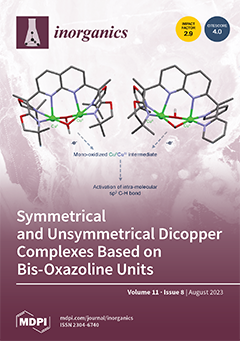An excessive accumulation of crystal violet dye in the human body results in an accelerated heart rate, tetraplegia, eye irritation, and long-term damage to the transparent mucous membrane that protects the eyeballs. Accordingly, in this paper, sodium manganese silicate/sodium manganese silicate hydroxide hydrate
[...] Read more.
An excessive accumulation of crystal violet dye in the human body results in an accelerated heart rate, tetraplegia, eye irritation, and long-term damage to the transparent mucous membrane that protects the eyeballs. Accordingly, in this paper, sodium manganese silicate/sodium manganese silicate hydroxide hydrate was easily fabricated as a novel type of nanostructures for the successful disposal of crystal violet dye from aqueous solutions. The formed sodium manganese silicate/sodium manganese silicate hydroxide hydrate nanostructures after the hydrothermal treatment of the gel produced from the interaction of Mn(II) ions with Si(IV) ions at 180 °C for 6, 12, 18, and 24 h were abbreviated as MS1, MS2, MS3, and MS4, respectively. The XRD showed that the average crystallite size of the MS1, MS2, MS3, and MS4 samples is 8.38, 7.43, 4.25, and 8.76 nm, respectively. The BET surface area of the MS1, MS2, MS3, and MS4 samples is 41.58, 46.15, 58.25, and 39.69 m
2/g, respectively. The MS1, MS2, MS3, and MS4 samples consist of spherical and irregular shapes with average grain sizes of 157.22, 88.06, 43.75, and 107.08 nm, respectively. The best adsorption conditions of the crystal violet dye employing the MS1, MS2, MS3, and MS4 products were achieved at pH = 8, contact time = 140 min, and solution temperature = 298 kelvin. The linear pseudo-2nd-order model as well as the linear Langmuir isotherm better describe the disposal of the crystal violet dye using the MS1, MS2, MS3, and MS4 adsorbents. The studied thermodynamic parameters indicated that the disposal of the crystal violet dye employing the MS1, MS2, MS3, and MS4 adsorbents is spontaneous, exothermic, and chemical. The maximum disposal capacities of the MS1, MS2, MS3, and MS4 adsorbents towards crystal violet dye are 342.47, 362.32, 411.52, and 310.56 mg/g, respectively.
Full article
 to open them.
to open them.




